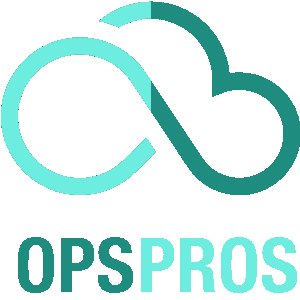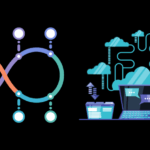
As organizations continue to adopt DevOps practices to improve their software development and delivery processes, it becomes essential to assess their readiness for this transformational shift. Conducting a DevOps readiness assessment can help organizations evaluate their DevOps maturity and identify areas of improvement. This evaluation can maximize operational efficiency and prepare organizations for DevOps adoption.
Key Takeaways
- A DevOps readiness assessment is important in determining an organization’s readiness for DevOps adoption
- Assessing DevOps maturity can help identify areas of improvement and maximize operational efficiency
- Conducting a DevOps readiness assessment involves evaluating an organization’s culture, processes, tools, and collaboration
- Ongoing assessment and continuous improvement are necessary to maintain DevOps readiness
What is a DevOps Readiness Assessment?
A DevOps readiness assessment is a process of evaluating an organization’s ability to adopt and implement DevOps practices. It is a comprehensive evaluation of an organization’s culture, people, processes, and technologies to determine its readiness to adopt DevOps. The assessment helps organizations identify gaps and challenges in their current IT workflows so that they can develop a roadmap for achieving their DevOps goals.
A DevOps readiness assessment typically involves analyzing and evaluating the following areas:
- Culture and collaboration
- Software development processes
- Infrastructure and automation
- Tools and technology
- Measurement and feedback
By conducting a DevOps readiness assessment, organizations can determine their current level of DevOps maturity and identify areas for improvement. This evaluation helps organizations create a plan for implementing DevOps practices and improving operational efficiency.
Why Conduct a DevOps Readiness Assessment?
Assessing DevOps maturity is crucial to ensure an organization is ready for DevOps adoption. Conducting a DevOps readiness assessment helps organizations identify gaps in their processes, tools, and culture, and establish a roadmap towards DevOps implementation.
DevOps is not just a technology or tool-based approach; it is a cultural shift that requires a significant change in mindset. Organizations that do not assess their readiness may face challenges in adopting DevOps practices, leading to increased costs, delays, and lower quality products.
Assessing DevOps maturity helps organizations:
- Identify areas that need improvement.
- Establish metrics to monitor progress.
- Align IT operations with business objectives.
- Improve collaboration between teams.
- Reduce time-to-market of software applications.
DevOps readiness assessment also helps organizations prioritize the DevOps adoption roadmap. Based on the assessment, organizations can identify low-hanging fruits, quick wins, and long-term initiatives. This approach ensures that organizations achieve benefits sooner, increasing the chances of success.
Furthermore, assessing DevOps maturity helps organizations avoid costly mistakes. Organizations may implement DevOps practices without assessing their readiness, leading to challenges in collaboration, automation, and continuous delivery practices. Such challenges require significant effort to overcome and could even derail the DevOps adoption process. By assessing DevOps maturity, organizations can identify and mitigate potential risks.
Conducting a DevOps readiness assessment is a critical step toward DevOps adoption readiness. It helps organizations identify gaps, establish a roadmap, prioritize initiatives, and mitigate risks. Organizations that assess their DevOps readiness achieve increased efficiency, reduced time-to-market, and improved product quality.
Key Components of a DevOps Readiness Assessment

A DevOps readiness assessment evaluates an organization’s maturity in DevOps practices. This assessment typically consists of various components to thoroughly evaluate an organization’s readiness for DevOps adoption. The following are the key components that are commonly included in a DevOps readiness assessment:
Culture
Assessing an organization’s culture involves evaluating how well its employees collaborate and work together. This includes reviewing communication channels, organizational values, and practices. The goal is to identify areas that could be improved to create a better work environment that fosters closer collaboration.
Processes
Evaluating an organization’s processes involves reviewing the current software development and delivery process. It includes identifying areas that could benefit from automation, such as continuous integration and continuous delivery. The goal is to streamline the software development and delivery process, reduce errors, and improve efficiency.
Tools
Assessing an organization’s tools involves reviewing the software and tools used in software development and delivery. This includes software development tools, testing tools, and infrastructure tools. The goal is to ensure that the current tools align with the organization’s goals, and identify any new tools that could be beneficial to improve efficiency and productivity.
Collaboration
Evaluating an organization’s collaboration involves reviewing how well the teams work together within the organization. It includes reviewing the level of collaboration between development and operations teams, and identifying any areas where they could work together more effectively to improve software development and delivery. The goal is to foster closer collaboration and communication between teams.
Assessing an organization’s maturity in DevOps practices can be a complex process. However, evaluating these key components can provide a comprehensive view of the organization’s readiness for DevOps adoption. By identifying areas of improvement, the organization can maximize the benefits of DevOps practices and improve software development and delivery efficiency.
Conducting a DevOps Readiness Assessment
Conducting a DevOps readiness assessment involves a series of steps to gather relevant data and evaluate an organization’s maturity in DevOps practices. This assessment helps identify areas of improvement and provides insights to make informed decisions in the DevOps adoption process.
The following are the key steps in conducting a DevOps readiness assessment:
- Define the scope: Determine the areas and departments of the organization that will be evaluated in the assessment.
- Identify assessment team: Form a team of experts from different parts of the organization to conduct the assessment.
- Gather data: Collect information about the organization’s current state, including its culture, processes, tools, and collaboration methods.
- Conduct interviews: Interview key stakeholders and personnel to gain insights into the organization’s strengths, weaknesses, and existing issues.
- Perform analysis: Evaluate the data and interview results to assess the organization’s maturity level, identify areas for improvement, and prioritize changes.
- Develop an action plan: Create a roadmap to guide the organization’s DevOps adoption, including recommendations for improving its culture, processes, tools, and collaboration methods.
It is important to note that conducting a DevOps readiness assessment is not a one-time activity, but a continuous process that should be repeated periodically. This approach ensures that the organization remains aligned with the best practices and emerging trends in the DevOps landscape.
Assessing DevOps maturity is a crucial step in preparing for DevOps adoption. In the following section, we will discuss how to interpret the results of a DevOps readiness assessment and take appropriate action to improve the organization’s maturity level.
Interpreting and Acting on Assessment Results
Once the DevOps readiness assessment is complete, it’s essential to interpret the results correctly and take appropriate action. The assessment results will provide valuable insights into an organization’s readiness level in terms of DevOps practices and culture. It will highlight areas of strength and areas for improvement.
It’s important to note that no organization is perfect, and there is always room for improvement. However, it’s crucial to prioritize the changes that need to be made to maximize the benefits of adopting DevOps practices.
The first step in interpreting the assessment results is to understand the significance of the different aspects evaluated. For example, if the assessment found that the organization’s culture is not conducive to DevOps practices, this can be a significant barrier to adoption. Similarly, if the processes evaluated are too rigid, this can slow down the software delivery process and impact the organization’s bottom line.
It’s essential to use the assessment results as a basis for action. Failure to take appropriate action can result in an organization remaining stuck in its current state, unable to take advantage of the benefits of DevOps practices.
The next step is to prioritize the changes that need to be made. It’s crucial to identify which areas need immediate attention and which ones can wait. This will help the organization to focus its efforts and allocate resources effectively.
It’s important to involve all stakeholders in the decision-making process to ensure buy-in and ownership of the changes that need to be made. Collaboration and communication are vital in DevOps practices, and this should be reflected in the process of acting on the assessment results.
Finally, it’s essential to monitor progress regularly. Continuous improvement is a fundamental aspect of DevOps, and organizations must track their progress to ensure they are on track and achieving the desired results.
Benefits of a DevOps Readiness Assessment

A DevOps readiness assessment can provide several benefits for organizations looking to adopt DevOps practices. By assessing DevOps maturity, organizations can identify areas that need improvement to maximize efficiency and streamline their processes. Here are some benefits of conducting a DevOps readiness assessment:
- Improved Collaboration: DevOps practices emphasize collaboration between teams, breaking down silos and creating a culture of communication and teamwork. A DevOps readiness assessment can help identify areas for improvement in collaboration and communication, ultimately leading to better collaboration between development and operations teams.
- Faster Software Delivery: DevOps practices aim to streamline processes and reduce bottlenecks in the software development and deployment pipeline. By identifying areas for improvement and implementing changes, organizations can speed up the delivery of software and achieve faster time-to-market.
- Increased Operational Efficiency: DevOps practices automate repetitive tasks and eliminate manual processes, reducing the risk of errors and allowing teams to focus on higher-value tasks. By evaluating their DevOps maturity and identifying areas for improvement, organizations can optimize their processes and increase operational efficiency.
Overall, a DevOps readiness assessment can help organizations achieve their DevOps adoption readiness goals and maximize the benefits of DevOps practices in their software development and deployment processes.
Challenges in Conducting a DevOps Readiness Assessment

Conducting a DevOps readiness assessment can be a complex process that presents several challenges. It requires careful planning and execution to ensure that the results are accurate and actionable. Here are some of the most common challenges that organizations may face:
- Lack of understanding: Some stakeholders may not fully understand the purpose of the assessment, which can lead to a lack of participation or engagement.
- Resistance to change: Resistance to change is a common issue in any organizational transformation, and DevOps adoption is no exception. Some stakeholders may resist changes to established processes and procedures.
- Measurement difficulties: Measuring the effectiveness of DevOps practices can be challenging, and organizations may struggle to identify the key performance indicators that will be used to evaluate success.
- Tool selection: Selecting the right tools for conducting a DevOps readiness assessment can be difficult. There are many options available on the market, and it can be challenging to find the right solution for your specific needs.
Despite these challenges, conducting a DevOps readiness assessment is a critical step in the DevOps adoption process. By identifying potential obstacles and taking steps to overcome them, organizations can increase their chances of success and realize the full benefits of DevOps practices.
Tools and Frameworks for DevOps Readiness Assessment
There are various tools and frameworks that organizations can use to conduct a DevOps readiness assessment. These tools and frameworks can help streamline the assessment process, provide a structured approach, and deliver actionable insights. Here are some of the most popular options:
The DevOps Maturity Model
The DevOps Maturity Model is a framework that provides a structured approach to evaluating an organization’s maturity in DevOps practices. It assesses an organization’s capabilities across five stages of maturity: Exploratory, Foundational, Advanced, Optimized, and Innovative. This framework can help organizations identify areas of improvement, benchmark their DevOps maturity against industry standards, and prioritize changes.
Scaled Agile Framework (SAFe)
The Scaled Agile Framework (SAFe) is a widely adopted framework for scaling Agile practices in large organizations. It includes a DevOps assessment tool that evaluates an organization’s readiness for DevOps adoption across seven dimensions: Continuous Exploration, Continuous Integration, Continuous Deployment, Release on Demand, Continuous Testing, Continuous Security, and Continuous Monitoring. This tool can help organizations identify strengths and weaknesses in their DevOps practices and develop a roadmap for improvement.
DORA Accelerate
The DORA Accelerate framework is based on research conducted by the DevOps Research and Assessment (DORA) team. It provides a metrics-driven approach to evaluating an organization’s DevOps practices across four key areas: Continuous Delivery, Architecture, Product and Process, and Culture. This framework can help organizations benchmark their DevOps performance against industry peers and identify areas for improvement.
Microsoft Azure DevOps
Microsoft Azure DevOps is a comprehensive set of tools and services for building, testing, and deploying software. It includes a built-in DevOps assessment tool that evaluates an organization’s readiness for DevOps adoption based on best practices and proven methodologies. This tool can help organizations identify gaps in their DevOps processes and develop a plan for improvement.
By leveraging these tools and frameworks, organizations can gain valuable insights into their DevOps readiness and identify areas for improvement. It is important to choose the right tool or framework that aligns with the specific needs and goals of the organization.
Continuous Improvement and DevOps Readiness
Conducting a DevOps readiness assessment is not a one-time event. Organizations should regularly reassess their DevOps maturity to ensure ongoing improvement and readiness for DevOps adoption. Continuous improvement ensures that organizations can adapt to changes in their environment and keep up with the ever-evolving technological landscape.
By regularly checking their DevOps maturity levels, organizations can identify areas of improvement and prioritize changes. They can also ensure that they are delivering software faster and more efficiently while maintaining high-quality standards. Continuous improvement allows organizations to keep up with emerging trends such as DevSecOps and Cloud Native and ensure they stay competitive in the market.
To achieve continuous improvement, organizations should create a roadmap that outlines their desired outcomes and goals. They should then track their progress against these goals and metrics to measure their success. The roadmap should be periodically reviewed and updated to keep it relevant to the organization’s current needs and priorities.
Organizations can also leverage various DevOps tools and frameworks to aid in their continuous improvement efforts. For example, the use of CI/CD pipelines and automated testing and deployment can help organizations deliver software faster and with fewer errors.
Overall, continuous improvement is essential for maintaining DevOps readiness and ensuring organizations are well-prepared for DevOps adoption. By prioritizing ongoing improvement and staying up-to-date with emerging trends and technologies, organizations can achieve maximum operational efficiency and maintain a competitive edge in the market.
Wraping up

Conducting a DevOps readiness assessment is a critical step in determining an organization’s readiness for DevOps adoption. By assessing an organization’s maturity in DevOps practices, organizations can identify areas of improvement and prioritize changes to maximize operational efficiency.
Continuous improvement is essential to maintain DevOps readiness. Regular reassessments and adaptations to changes in the environment are necessary to ensure ongoing improvement and success.
Organizations that conduct a DevOps readiness assessment can expect to achieve improved collaboration, faster software delivery, and increased operational efficiency. To ensure success, it is essential to use the right tools and frameworks and overcome potential challenges that may arise during the assessment process.
In conclusion, a DevOps readiness assessment is a crucial first step in the journey to DevOps adoption readiness. We encourage all organizations to take the necessary steps to evaluate their readiness and capitalize on the benefits that DevOps practices provide.
FAQ

Q: What is DevOps readiness assessment?
A: DevOps readiness assessment is a process through which an organization evaluates its readiness to implement and adopt DevOps practices. It helps identify the gaps and areas of improvement in the organization’s development and operations teams.
Q: Why is DevOps implementation important?
A: DevOps implementation is important because it allows organizations to automate and streamline their software delivery processes, improve efficiency and collaboration between development and operations teams, and ultimately deliver high-quality software faster.
Q: How can I implement DevOps in my organization?
A: To implement DevOps in your organization, you need to adopt a set of practices and principles that promote collaboration, automation, and continuous delivery. This includes automating deployments, adopting agile methodologies, implementing configuration management, and fostering a culture of collaboration.
Q: What are the goals of DevOps?
A: The goals of DevOps include improving software delivery speed, increasing customer satisfaction, enhancing application performance and reliability, and enabling faster feedback loops between development and operations.
Q: How can I assess my organization’s readiness for DevOps?
A: You can assess your organization’s readiness for DevOps by evaluating factors such as your organization’s culture, current tools and processes, level of collaboration between development and operations teams, and the willingness to embrace change and adopt DevOps practices.
Q: What is a DevOps maturity model?
A: A DevOps maturity model is a framework that defines a set of stages or levels through which an organization can progress in its DevOps journey. It helps organizations identify their current level of DevOps maturity and provides guidance on how to reach higher levels of maturity.
Q: How can a DevOps scorecard help organizations?
A: A DevOps scorecard is a quantitative assessment that evaluates an organization’s readiness and progress in adopting DevOps practices. It provides a clear picture of the organization’s strengths, weaknesses, and areas of improvement in terms of implementing DevOps.
Q: What are the key elements of a successful DevOps implementation?
A: A successful DevOps implementation requires a combination of technical and cultural factors. It includes having the right set of tools and processes, fostering a culture of collaboration and continuous learning, promoting automation and continuous delivery, and aligning development and operations teams towards a common goal.
Q: Why is configuration management important in DevOps?
A: Configuration management is important in DevOps because it ensures that the software deployment process is consistent, reproducible, and reliable across different environments. It helps maintain the integrity and stability of the software release by keeping track of configuration changes and ensuring version control.
Q: How does DevOps contribute to business value?
A: DevOps contributes to business value by enabling faster and more frequent software releases, which allows organizations to respond quickly to market demands and customer needs. It also improves customer satisfaction by delivering high-quality software that meets their expectations.
Noah is an accomplished technical author specializing in Operations and DevOps, driven by a passion ignited during his tenure at eBay in 2000. With over two decades of experience, Noah shares his transformative knowledge and insights with the community.
Residing in a charming London townhouse, he finds inspiration in the vibrant energy of the city. From his cozy writing den, overlooking bustling streets, Noah immerses himself in the evolving landscape of software development, operations, and technology. Noah’s impressive professional journey includes key roles at IBM and Microsoft, enriching his understanding of software development and operations.
Driven by insatiable curiosity, Noah stays at the forefront of technological advancements, exploring emerging trends in Operations and DevOps. Through engaging publications, he empowers professionals to navigate the complexities of development operations with confidence.
With experience, passion, and a commitment to excellence, Noah is a trusted voice in the Operations and DevOps community. Dedicated to unlocking the potential of this dynamic field, he inspires others to embrace its transformative power.







